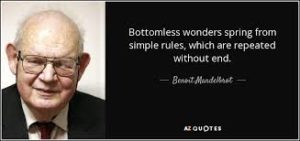Patterns are models, or plans, used to produce nearly perfect copies of a specific design. In fact, the ability to discern a pattern from raw data is usually considered an indicator of advanced intelligence. Some scientists (who happen to be avowed atheists, and curiously not agnostic) will argue that when words like "models", "plans", and "design" are used to describe an organic, natural process, those words don't mean what they would ordinarily mean. These experts also claim the appearance of design in a living organism is nothing more than an overwhelmingly convincing optical illusion. In his book The Greatest Show on Earth: The Evidence for Evolution, biologist (and renowned atheist) Richard Dawkins wrote, Perhaps it was religious indoctrination that held us back (from believing in evolution). Or perhaps it was the daunting complexity of a living organ such as an eye, freighted as it is with the beguiling illusion of design by a master engineer. Why does Mr. Dawkins believe that our eyes have deceived us, and the intuitively obvious appearance of design in our bodies only an illusion? It's because he perceives design flaws in the human eye, probably due to the fact that the photoreceptor cells in the retina are allegedly placed backward. Dawkins has also been quite adamant about his belief that the vas deferens tube in humans and the laryngeal nerve in a giraffe are also examples of "poor" design which, as this website suggests, commits the logical fallacy of personal incredulity. This argument of Dawkins depends upon our making the assumption … [Read more...]
where to buy Aurogra Southern Prose
Home of Author and Freelance Writer John Leonard

